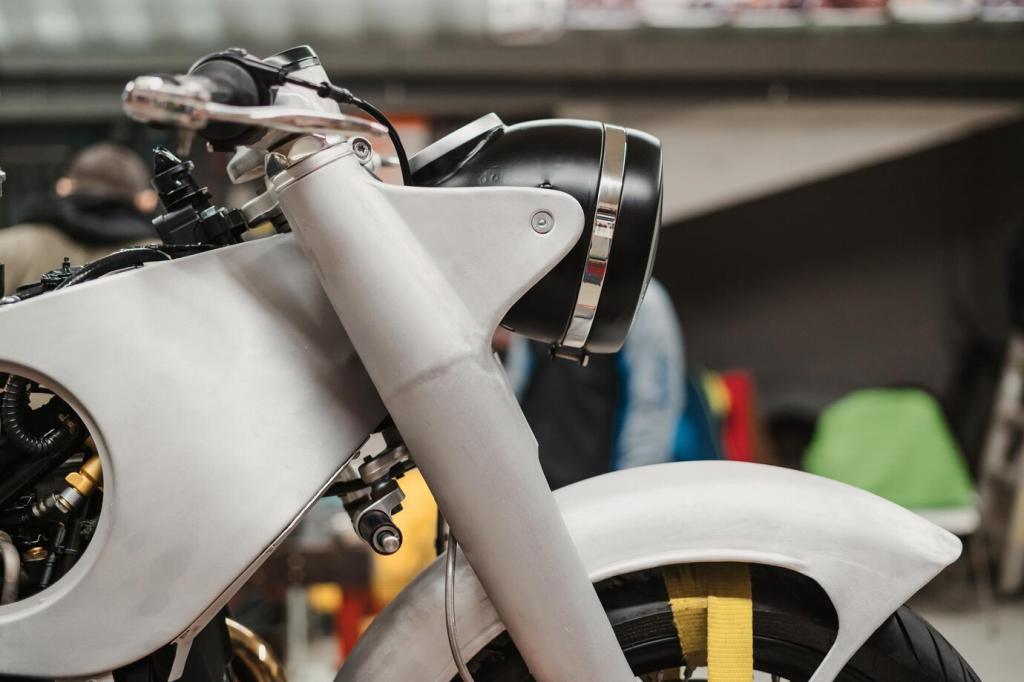Keep Rolling Smoothly: Electric Scooter Tire Care and Replacement Tips
Chosen theme: Electric Scooter Tire Care and Replacement Tips. Welcome, riders! Explore practical guidance, real-world stories, and easy routines that keep your scooter confident on every street. Subscribe for fresh maintenance checklists, and share your tire wins with our community.

Know Your Electric Scooter Tires
Pneumatic vs. Solid vs. Tubeless
Pneumatic tires cushion bumps and grip well but require pressure checks. Solid tires resist punctures yet ride harsher. Tubeless blends comfort with repairability. Share which style you use and why it suits your streets.
Tread Patterns and What They Mean
Siped patterns clear water for rain resilience, slicker designs reduce rolling resistance for range, and blocky treads bite into mixed terrain. Snap a photo of your tread and ask the community for terrain-specific feedback.
Sizing and Load Ratings
Tire sidewalls list diameter, width, and load rating. Match them exactly to avoid rubbing, rim damage, or reduced stability. Post your current size details to get crowd suggestions before ordering replacements.
Pre‑Ride Inspection Routine
Spin each wheel, listen for scraping, and feel for wobble. Check sidewalls for bulges or cuts. Spot issues early and share your fastest pre‑ride checklist to inspire other riders to adopt good habits.
Pressure Checks That Actually Stick
Use a reliable gauge and follow manufacturer PSI guidance, adjusting for rider weight and cargo. Consistent pressure improves range and control. Comment with your PSI sweet spot and how it changed your handling.
Cleaning Without Compromise
Wipe grime with mild soap, avoiding harsh solvents that dry rubber. Clean tread grooves to restore grip. Tell us which cleaner works for you and how often you refresh tires during rainy seasons.
Inflation Mastery: Pressure, Temperature, and Tools
Finding the Right PSI for Your Model
Consult your scooter manual and tire sidewall, then fine‑tune based on surface and rider weight. Lower pressures add comfort, higher pressures add efficiency. Post your model and terrain to crowdsource personalized PSI suggestions.


Using Gauges, Pumps, and Sealant Correctly
Keep a compact pump and accurate gauge in your bag. If tubeless, apply sealant as instructed and rotate wheels to distribute. Share a quick video or description of your inflation kit and storage hacks.


Puncture Prevention That Works
Scan ahead for glass, screws, and sharp gravel; choose clean road lines and avoid gutter debris. Share a memorable hazard you dodged and how your awareness technique kept your tires intact.
Puncture Prevention That Works
Puncture‑resistant liners and quality sealants can turn pinpricks into non‑events. Install carefully to avoid pinching tubes. Tell us which brand saved your commute, and whether the ride feel changed afterward.
Selecting the Right Replacement Tires
Softer compounds grip better but may wear faster; harder compounds roll longer with less traction. Pick tread that suits rain or dry climates. Share your mileage results to guide other riders’ choices.
Selecting the Right Replacement Tires
Tubed setups are simple and cheap; tubeless repair quickly, while honeycomb avoids flats with firmer feel. Tell us which system matched your commute and whether your maintenance time improved afterward.
Selecting the Right Replacement Tires
Confirm diameter, width, rim type, and axle clearance. Verify brake and fender space, then check load rating. Post your scooter model, current tire code, and intended use to crowd‑verify compatibility confidently.
Post‑Replacement Checks and Break‑In
Verify axle torque, ensure the wheel spins without rub, and confirm rotor and fender clearance. Recheck fasteners after your first ride. Share any torque specs from your manual to help others stay precise.
Post‑Replacement Checks and Break‑In
Take the first 30–50 kilometers easy. Avoid aggressive braking and sharp lean angles while surface mold release wears off. Tell us how your grip evolved across days and when confidence fully returned.
Post‑Replacement Checks and Break‑In
Listen for unusual noises, watch for slow leaks, and feel for vibrations that suggest seating issues. Note changes in steering feel. Comment with any early signs you caught and how you corrected them.
